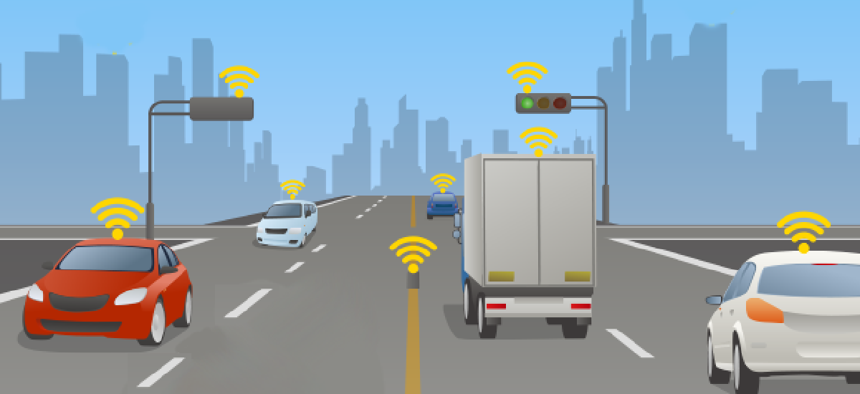4 connected vehicle apps Michigan is testing right now


Connecting state and local government leaders
Working with vehicle manufacturers and university researchers, the state is already deploying technology that allows cars to communicate with the infrastructure and other vehicles.
Transportation automation began with the stoplight and hasn't stopped since, according to Kirk T. Steudle, the director of the Michigan Department of Transportation.
While fully autonomous driving may still be “a long ways away, connected vehicle deployments are happening,” Steudle said at a recent event hosted by the U.S. DOT Volpe Center focusing on advanced technologies in transportation.
Connected vehicle technologies could reduce human error that can lead to lethal accidents, he said. “If we know the technology can save lives, why are we waiting to deploy it?”
Michigan is not waiting. Working with vehicle manufacturers and university researchers, the state is already deploying technology that allows cars to communicate with the infrastructure and other vehicles. Some of those connected vehicle innovations include:
Red light violation warning. A “smart” traffic signal transmits a message to an approaching car that the light about to turn red and issues a warning to drivers to brake if they’re approaching too fast. Michigan is not the only state testing this technology. The capability has been deployed for Audis in Washington, D.C.,
Road weather management. In 2015, a 193-car pileup in Michigan was blamed on a snowstorm that cut visibility to almost zero so that drivers couldn’t see the accidents ahead. To address this problem, Steudle suggested, roadside units, which already communicate with cars, could be connected to weather stations for information on bad weather and road icing and send drivers warnings of hazardous driving conditions so they can reduce their speed.
Work zone warning. Drivers can be notified of changes in the speed limit or lane closures associated with road work. If a vehicle is approaching a work zone too fast, the technology will send a warning
Pavement condition monitoring. When a car hits a pothole, a vehicle's onboard sensors can send data to roadside units and eventually to asset management systems that can alert DOT maintenance officials to roads that need repair.
NEXT STORY: Artificial intelligence will make you smarter




